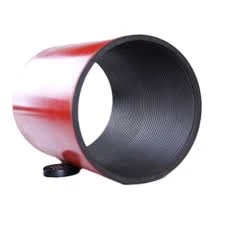- Afrikaans
- Albanian
- Amharic
- Arabic
- Armenian
- Azerbaijani
- Basque
- Belarusian
- Bengali
- Bosnian
- Bulgarian
- Catalan
- Cebuano
- Corsican
- Croatian
- Czech
- Danish
- Dutch
- English
- Esperanto
- Estonian
- Finnish
- French
- Frisian
- Galician
- Georgian
- German
- Greek
- Gujarati
- Haitian Creole
- hausa
- hawaiian
- Hebrew
- Hindi
- Miao
- Hungarian
- Icelandic
- igbo
- Indonesian
- irish
- Italian
- Japanese
- Javanese
- Kannada
- kazakh
- Khmer
- Rwandese
- Korean
- Kurdish
- Kyrgyz
- Lao
- Latin
- Latvian
- Lithuanian
- Luxembourgish
- Macedonian
- Malgashi
- Malay
- Malayalam
- Maltese
- Maori
- Marathi
- Mongolian
- Myanmar
- Nepali
- Norwegian
- Norwegian
- Occitan
- Pashto
- Persian
- Polish
- Portuguese
- Punjabi
- Romanian
- Russian
- Samoan
- Scottish Gaelic
- Serbian
- Sesotho
- Shona
- Sindhi
- Sinhala
- Slovak
- Slovenian
- Somali
- Spanish
- Sundanese
- Swahili
- Swedish
- Tagalog
- Tajik
- Tamil
- Tatar
- Telugu
- Thai
- Turkish
- Turkmen
- Ukrainian
- Urdu
- Uighur
- Uzbek
- Vietnamese
- Welsh
- Bantu
- Yiddish
- Yoruba
- Zulu
Understanding the Mechanisms and Applications of Pup Joint Tubing in Oil and Gas Industry
Understanding Pup Joint Tubing in Oil and Gas Industry
Pup joints are critical components in the oil and gas industry, particularly when it comes to managing the complexities of well constructions, ranging from drilling to production. These short lengths of pipe are primarily used to make up the necessary distance in a tubular string or to connect various sections of pipe. Though they appear simple in design, their significance cannot be overstated, especially in enhancing operational efficiency and ensuring well integrity.
What is Pup Joint Tubing?
Pup joint tubing refers to short pieces of pipe used to fill gaps in a string of casing or tubing. Standard pup joints typically range from one to ten feet in length, and they can be made from various materials, including carbon steel and stainless steel. The specific material and specifications depend on the required strength, corrosion resistance, and temperature tolerance needed for particular applications.
These joints are classified based on their internal diameter, wall thickness, and the design standards they meet, such as API (American Petroleum Institute) specifications. This classification ensures that pup joints can withstand the demanding conditions of oil and gas extraction, such as high pressures and corrosive environments.
Uses of Pup Joint Tubing
Pup joints serve various functions within the oil and gas operations
1. Compensating for Depth Adjustments During the drilling process, operations often encounter unexpected shifts in depth that require adjustments in the length of the tubular strings. Pup joints can easily be added to compensate for these changes.
2. Bending and Curving In some cases, well designs require tubular strings to bend or curve, and using pup joints can facilitate this by allowing for short lengths that connect more easily at angled joints.
3. Connection of Different Tubing Sizes When different sizes of tubing or casing need to be connected, pup joints can provide the versatility required to bridge the gaps, maintaining the overall integrity and flow of the system.
pup joint tubing

Installation and Maintenance
The installation of pup joints is straightforward; they are threaded on both ends, allowing them to be screwed onto existing sections of pipe. However, it is vital that they are installed according to the specific torque specifications and alignment to avoid issues such as leaks or failures under pressure.
Maintenance involves regular inspections for corrosion, wear, and structural integrity. Because they are essential for maintaining the flow of oil and gas, any signs of degradation must be addressed immediately to prevent mishaps or production downtime.
Advantages of Pup Joints
The advantages of using pup joint tubing are numerous
- Flexibility They offer significant flexibility in tubular string design, allowing operators to customize their setups to fit specific well conditions.
- Cost-Effectiveness Instead of producing a completely new string of casing or tubing, using pup joints can be a more economical solution when minor adjustments are needed.
- Enhanced Safety With their proper use, pup joints contribute to the overall safety of drilling operations by ensuring well integrity is maintained.
- Ease of Replacement Should a pup joint fail, replacing a short section is more manageable than replacing lengthy segments of tubing or casing.
Conclusion
Pup joint tubing may be small, but its role in the oil and gas industry is enormous. By enabling flexibility in operations, enhancing safety, and providing a cost-effective solution for depth adjustments, pup joints are integral to the successful management of drilling and production activities. As the industry continues to innovate, understanding and utilizing these essential components will remain vital for optimizing production efficiency and ensuring the safe extraction of hydrocarbons.
-
Tubing Pup Joints: Essential Components for Oil and Gas OperationsNewsJul.10,2025
-
Pup Joints: Essential Components for Reliable Drilling OperationsNewsJul.10,2025
-
Pipe Couplings: Connecting Your World EfficientlyNewsJul.10,2025
-
Mastering Oilfield Operations with Quality Tubing and CasingNewsJul.10,2025
-
High-Quality Casing Couplings for Every NeedNewsJul.10,2025
-
Boost Your Drilling Efficiency with Premium Crossover Tools & Seating NipplesNewsJul.10,2025







